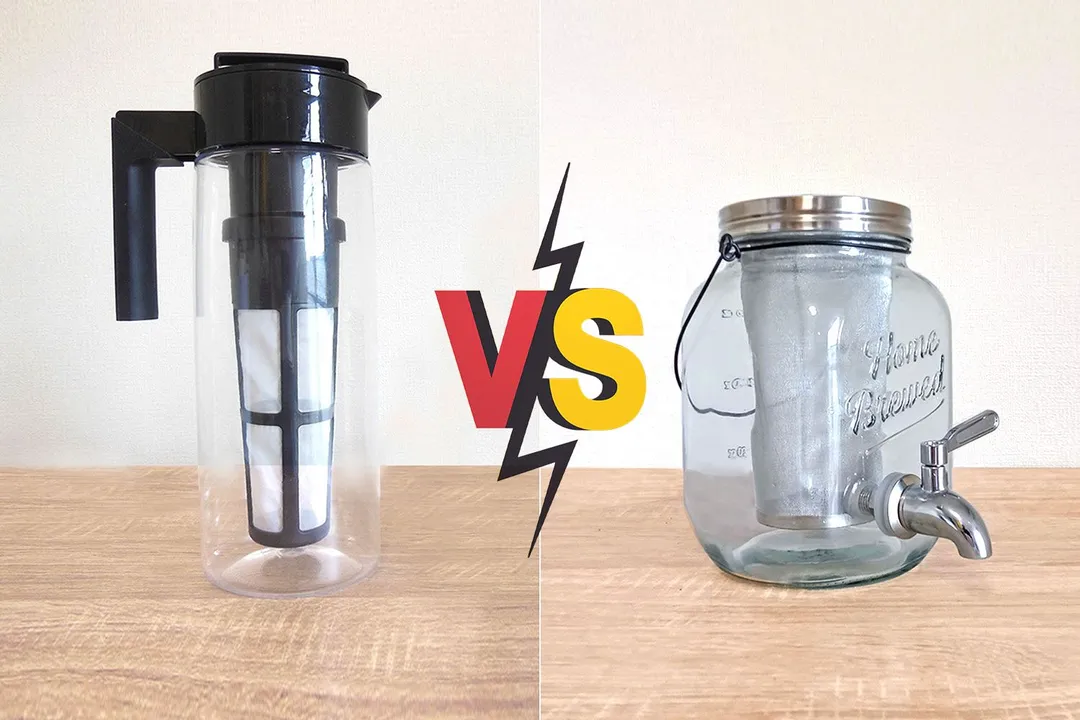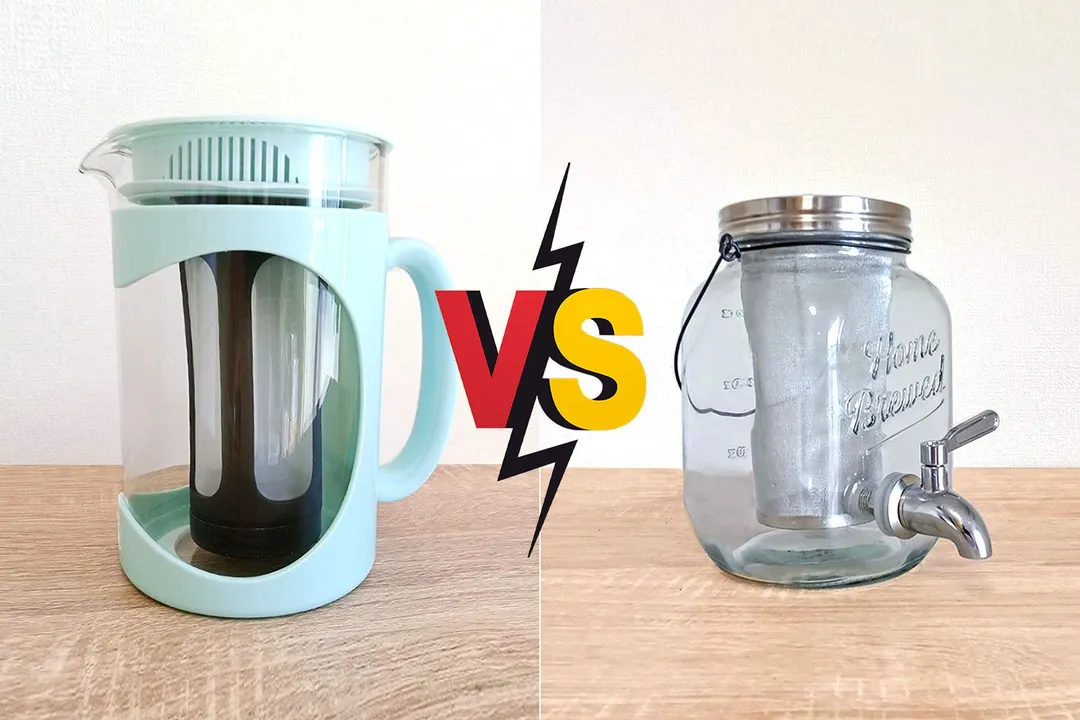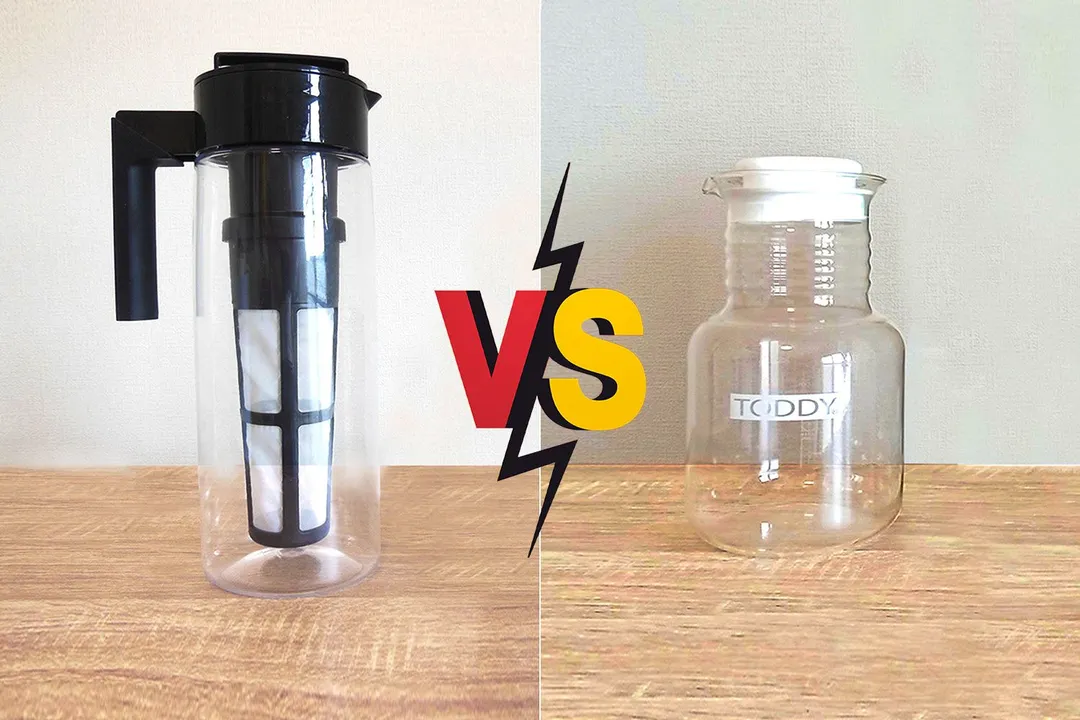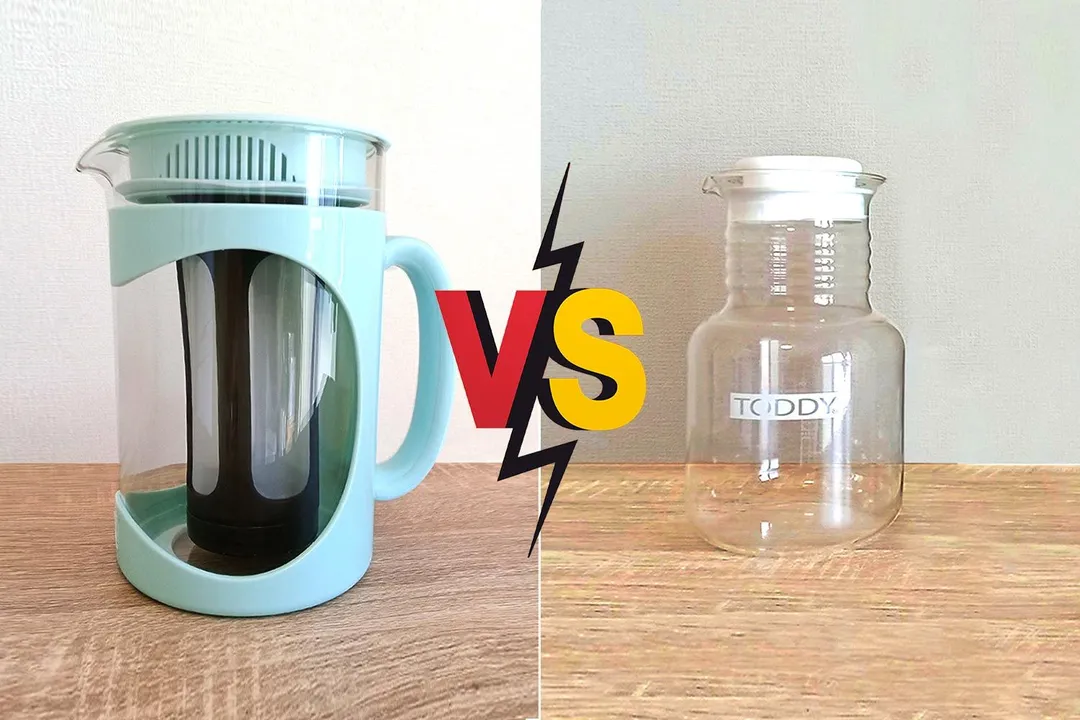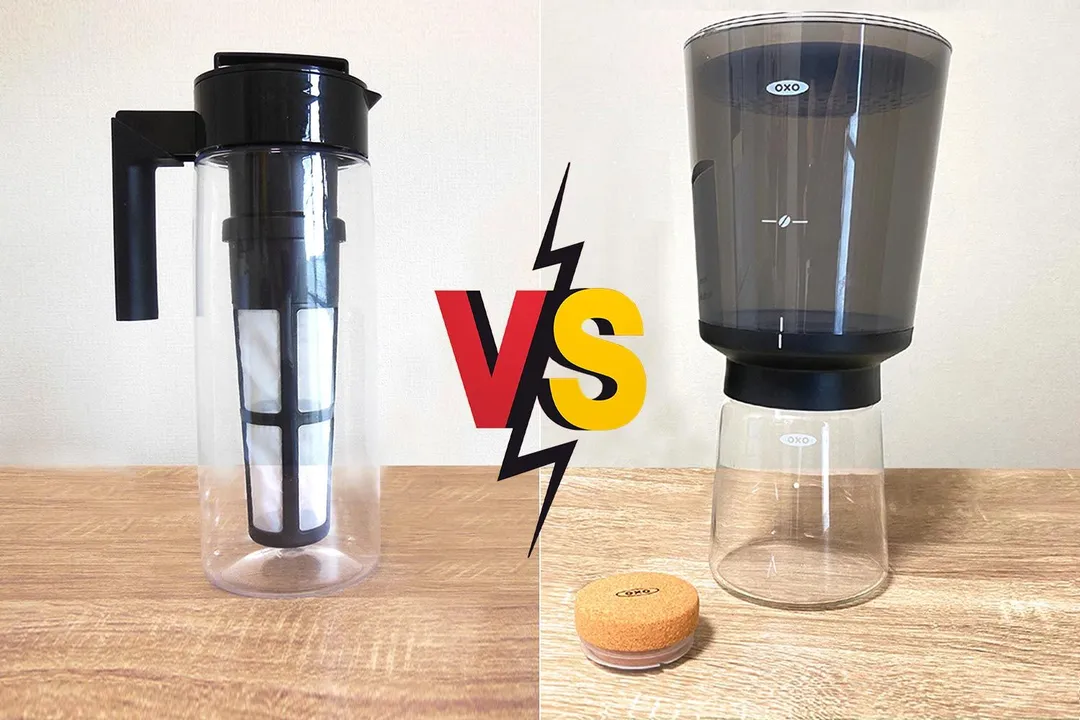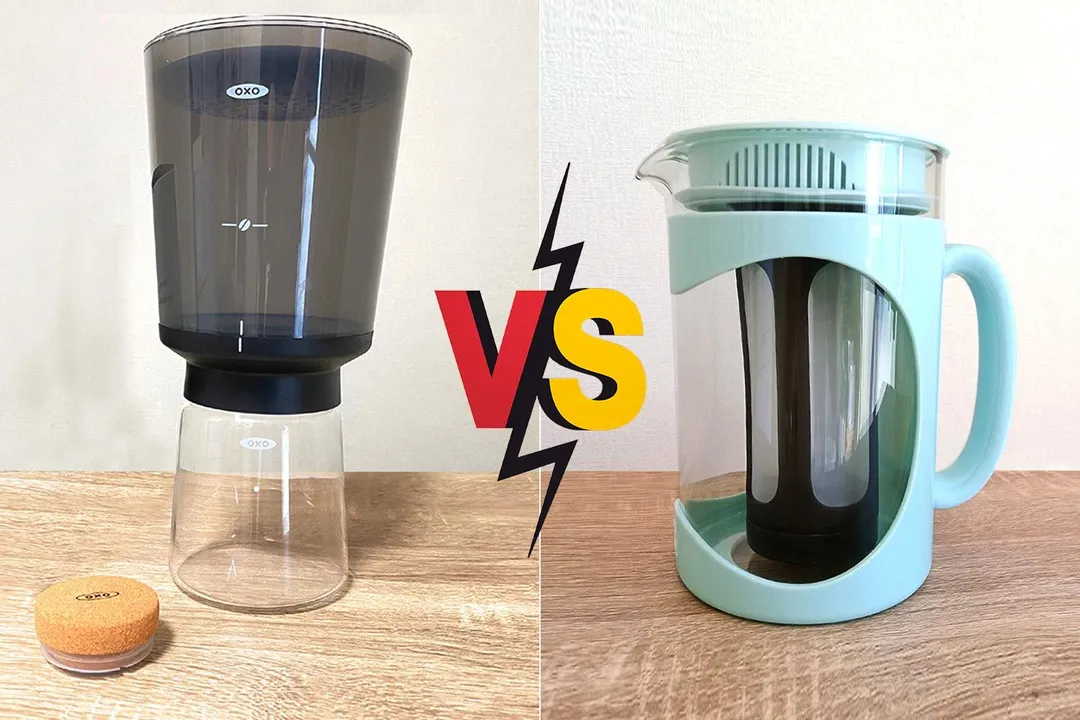Our recommendations are made independently through Research & Testing. We may receive commissions from purchases made via our links.
Primula Burke vs Takeya Side-by-Side Comparison
Primula Burke cold brew coffee maker vs Takeya. Two original design concepts, but only one succeeds at making a good cold brew coffee.
Primula Burke Deluxe
Tested Using Methodology v1.0Takeya
Tested Using Methodology v1.0
Overall Verdict
The Primula Burke is a nicely designed product. It produces up to 40 fl.oz. of cold brew coffee to a brew ratio of 1:12. It’s more round that tall, and the filter clips neatly onto the outer lid. Then, you can pour water before screwing in the inner lid. The two-lid design is quite practical and the outer lid also twists for pouring.
Despite the practical design, the Primula Burke fails to produce a worthwhile cold brew coffee. The reason being that the nylon filter is far too fine to allow for enough cross flow to develop a good brew. For this reason, we do not recommend the Primula Burke for cold brew coffee making.
The Takeya, however, has a very practical and workable design. It produces a good quality brew and it is completely spill-proof. You can brew with the vessel standing in a refrigerator door or laying on its side on a shelf. It also has an inner lid that twists for easy pouring.
Pros & Cons
- Detachable filter base
- Protective plastic jacket
- Lid design
- Easy to clean
- Thick glass
- Air tight brew decanter
- Cold or hot (tea) brewing
- BPA-free
- Dishwasher safe
- Durable & light weight
- 1 and 2 quart sizes
- Color choice
- No measurement markings
- A little heavy
- Weak brew strength
- Inadequate packaging
- Included instructions inadequate
- Filter cleaning
Key Specs
Where to Buy
*You help support HealthyKitchen101's product testing and reviews by purchasing from our retail partners.
Analysis and Test Results
Brew Quality
Bouquet
Drinkability


Sediment
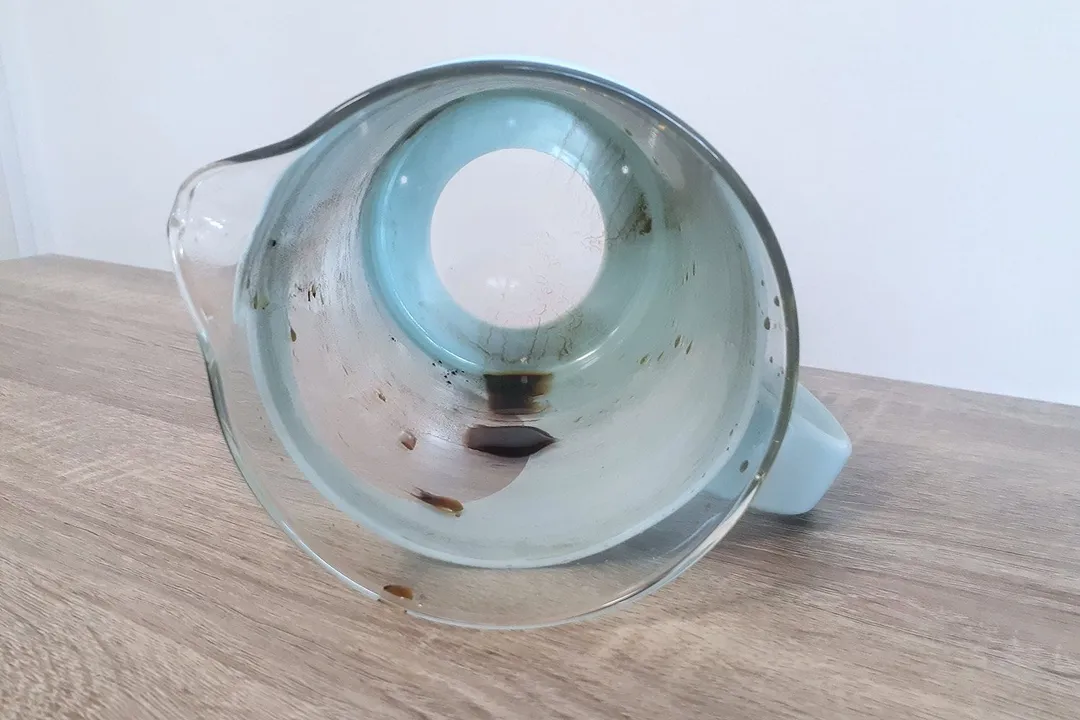

Design
In the Box


Decanter
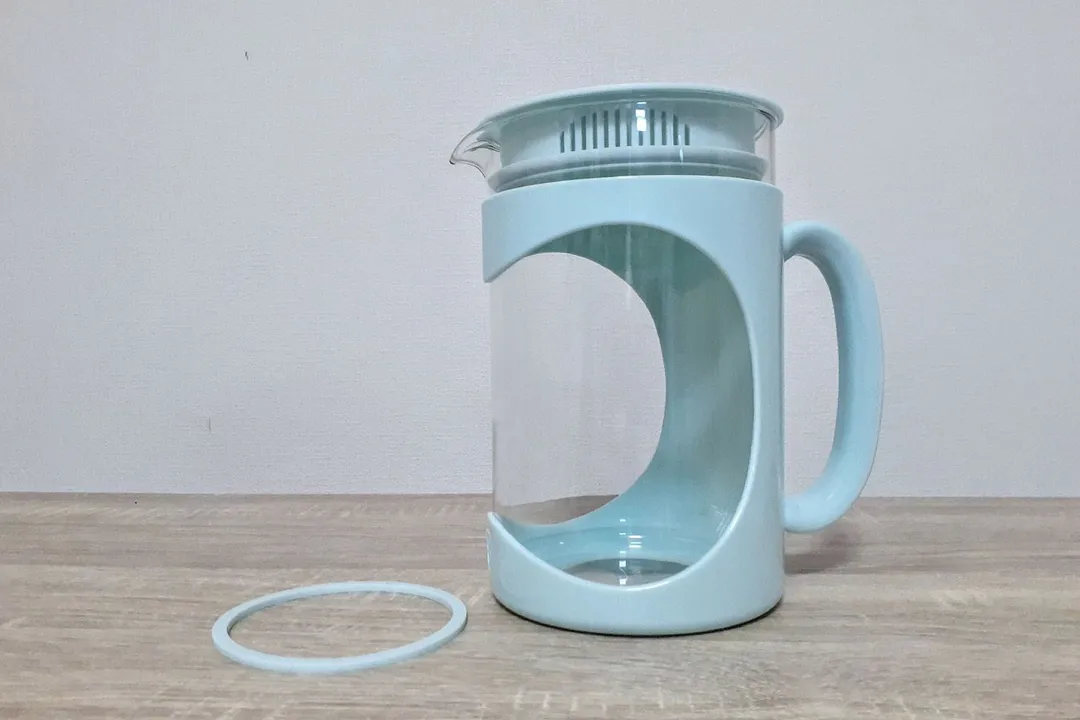
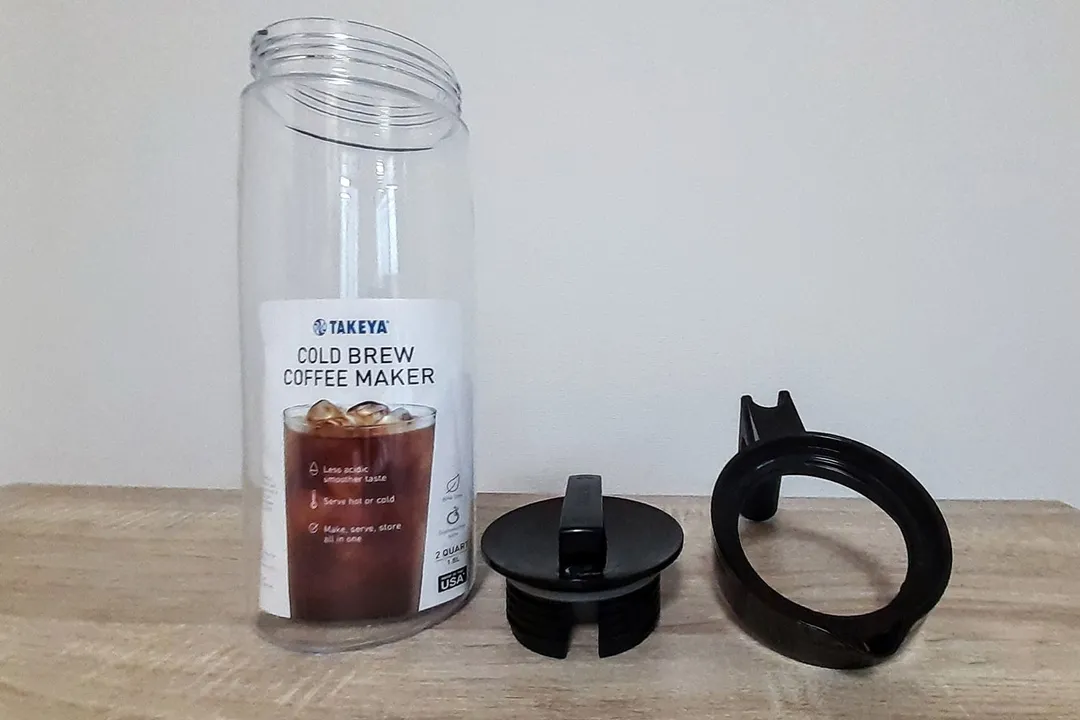
Stopper / Lid
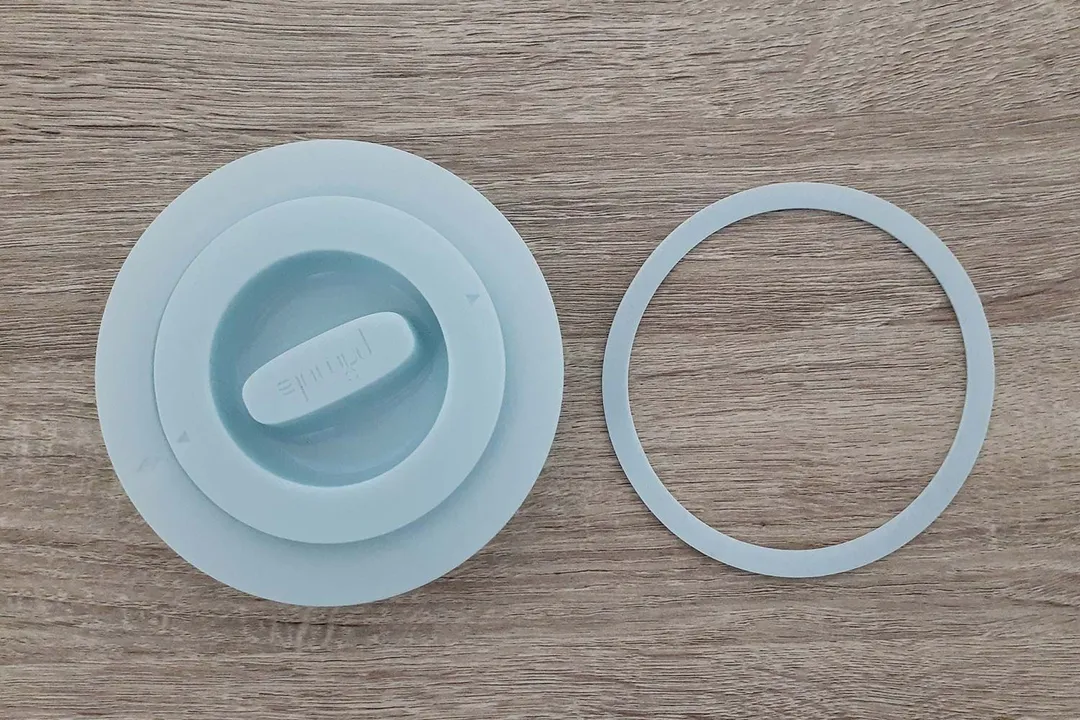
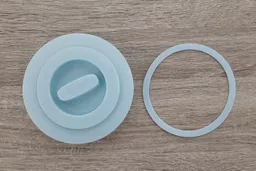


Filter
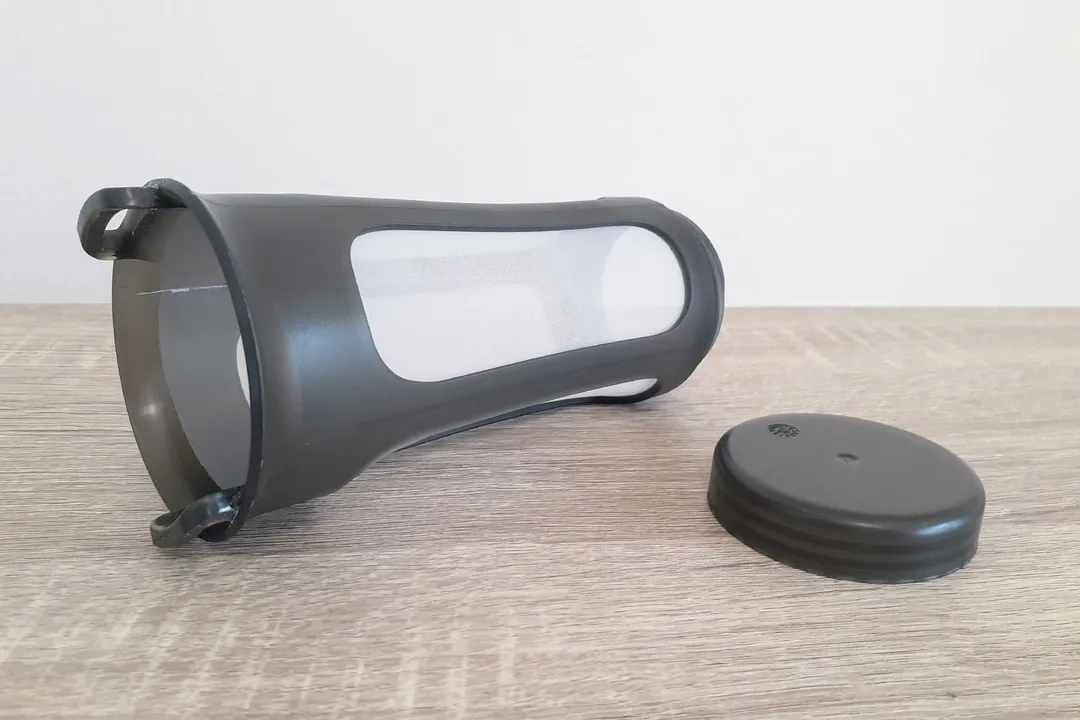

Build Quality


Usability
Brewing
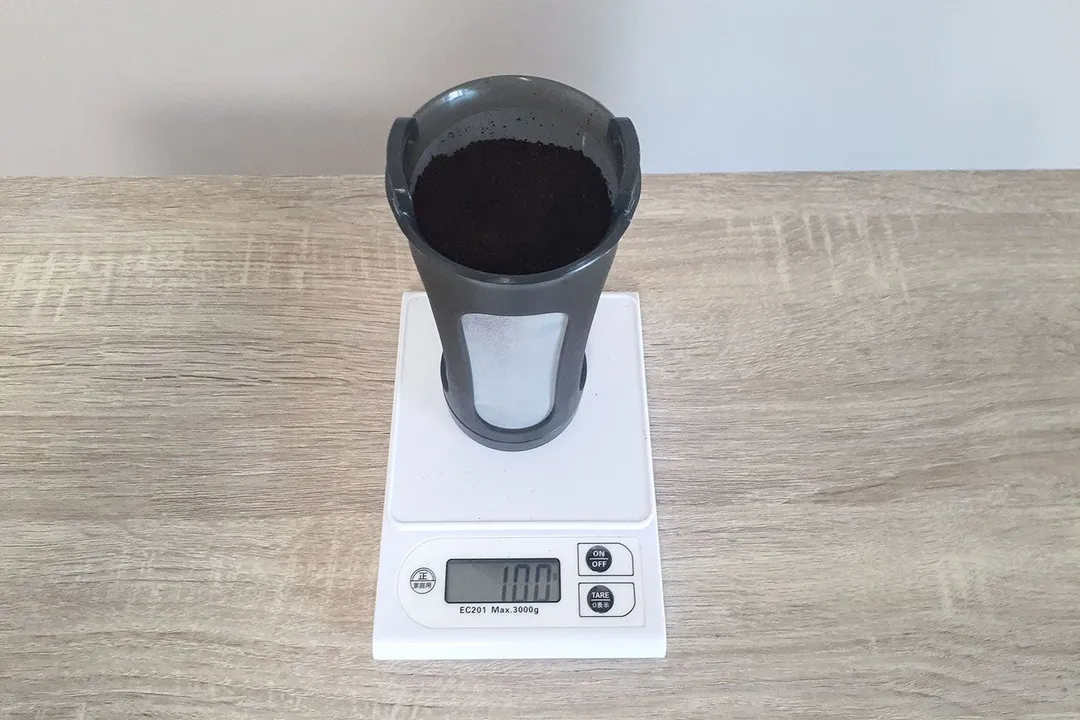
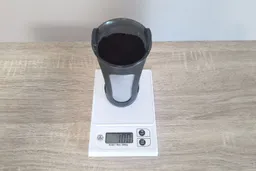
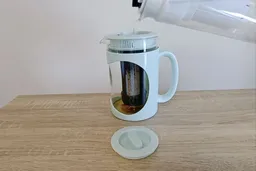
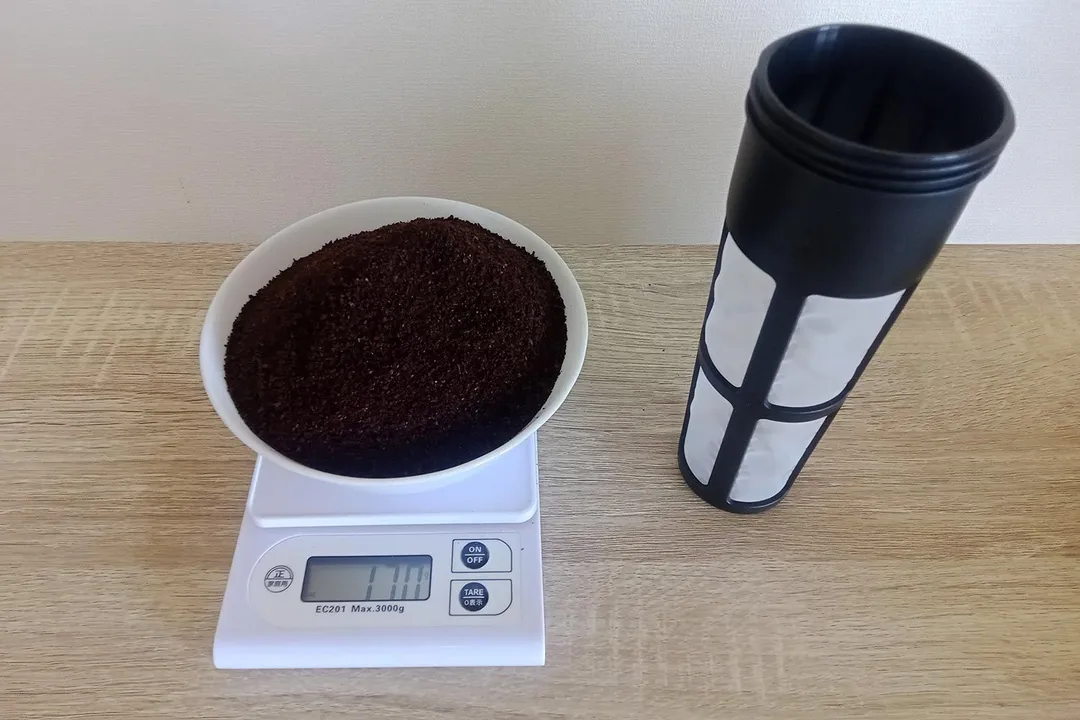
Decanting
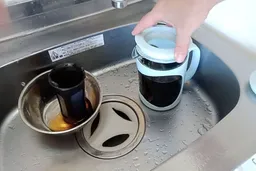
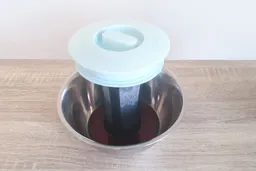
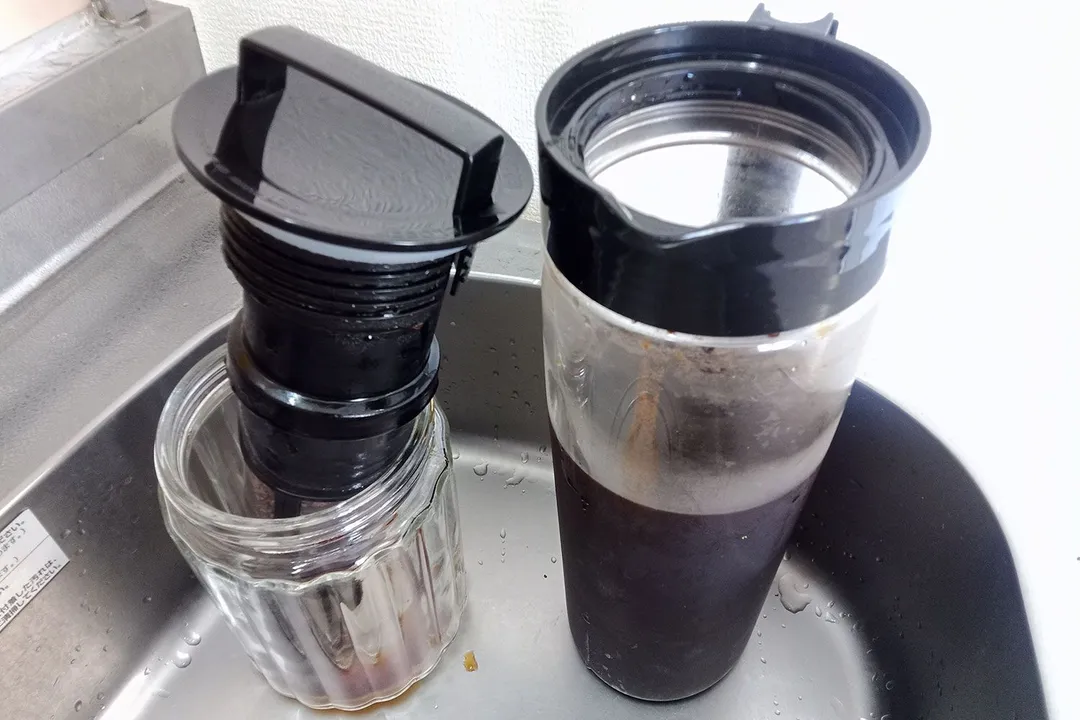
Cleaning and Storage
Behind the Comparison
Roger Shitaki is a writer, author, and editor. His niches are household appliances, health & wellness, and travel. He’s a freelance contributor to a Tokyo lifestyle website and a leading ophthalmology magazine in Asia.

